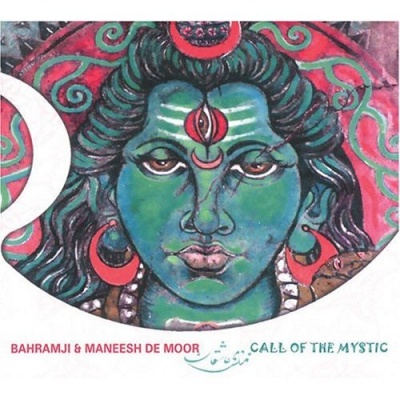
Bahramji & Maneesh De Moor
Imagine this: 35 Celsius, a warm breeze, the fragrance of the ocean, voices of people singing together - enjoying life as it is they sing, chant, laugh and dance till they drop! Who are these people? Call them Sufi’s - and Bahram-Ji is one of their number. He plays a magical instrument, the Persian Santoor, which, the SufiŒs say, creates the sound of emptiness. In addition, he is a fine singer, a channel for the divine and a great cook! Now imagine again: 35 Celsius, disco lights, city-people, dancing close together based in the urban jungle of Amsterdam, Maneesh de Moor is musician and producer, who specializes in the crossover between the ethnic and the ambient - the traditional and the contemporary N a magician, who brings the past into the present. Different roots, but meeting in the same bliss, keyboard-wiz Maneesh and Sufi mystic Bahram-Ji jump together into the studio and created for us this most precious music. Made in deep respect for each others amazing talents, from the heart, with no compromise. The lyrics are based on the poetry of Rumi and other mystics and the tracks carry an urban vibe rooted in meditation. A powerful concoction. They dedicate the album to ever increasing abundance love and world peace, to more friendship among tribes, to less war among brothers and ultimately to God itself. This is where their music comes from and this is the message they bring ? Inshallah. The European half of this cross-cultural experiment, De Moor, is known for his work on the ambient scene with strong leanings toward lands well east of Amsterdam, which is where Bahramji comes in, playing the multi-stringed Persian santoor. The far-from-rare attempt of this collaboration is to create a middle ground between the ethnic and the ambient. And there are moments, as the crisp santoor of Bahramji cuts carefully across the decidedly down-tempo electronic wash from De Moor, creating a compelling space for the meandering Sufic chants of Bahramji’s voiceovers. In a regular rotation through the length of this CD, you will hear an oud here, a kamanche fiddle there, a darbouka and a ney thrown in for good measure, stitched together with a consistent arc of synthesized hum and throb in varying degrees of background—deliciously disorienting or a bit confusing, depending on how you want to look at it.
